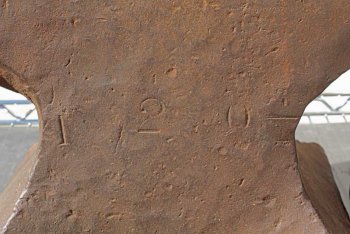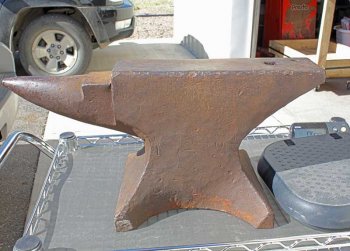I just picked this up locally.
It's 169lbs
The Pritchel hole is 5/8"
The hardie hole is 7/8" or a pretty skinny 1"
The makers mark side is fairly worn. We tried to rub some oil on it for increased contrast and even tried to do a rubbing but we couldn't make it all out.
There are 3 lines.
The top line says WOOD (something)
the Second line says (something) BRIDGE
The third line says WARRANTED
The back side is marked 1 2 0
The rebound is OK but nothing to get excited about. It has a 1/4" sway I will dress out with an angle grinder. The edges are fairly worn and beyond getting them sharp again. The wear marks around the feet are interesting like they were used for cutting but then it might also be how it was secured to a base.
Any ideas?




It's 169lbs
The Pritchel hole is 5/8"
The hardie hole is 7/8" or a pretty skinny 1"
The makers mark side is fairly worn. We tried to rub some oil on it for increased contrast and even tried to do a rubbing but we couldn't make it all out.
There are 3 lines.
The top line says WOOD (something)
the Second line says (something) BRIDGE
The third line says WARRANTED
The back side is marked 1 2 0
The rebound is OK but nothing to get excited about. It has a 1/4" sway I will dress out with an angle grinder. The edges are fairly worn and beyond getting them sharp again. The wear marks around the feet are interesting like they were used for cutting but then it might also be how it was secured to a base.
Any ideas?




Last edited:
